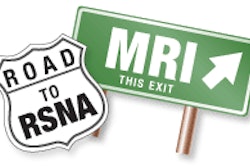Dear MRI Insider,
Never in the history of sports has the issue of concussions and head injuries received such attention at so many levels. From the National Football League and the National Hockey League to the college and high school ranks, athletes, coaches, physicians, and trainers, all are taking a long and thoughtful look at how repeated blows to the head can affect short- and long-term cognitive skills.
In this issue of the MRI Insider, we offer details on research from Purdue University, where a group, using 3-tesla functional MRI (fMRI), has found that some high school football players suffer undiagnosed changes in brain function as a result of repeated hits to the head during a game or practice.
The findings, of course, are cause for concern and create a dilemma. The results suggest athletes may suffer a form of injury that does not exhibit the usual clinical signs of a head injury. Read more about this fascinating study by clicking here.
Also, associate editor Kate Madden Yee reports on how breast MRI's sensitivity is superior to that of mammography in long-term screening for women at risk of breast cancer. The study, published in the Journal of Clinical Oncology, also showed that breast MRI improved survival rates by almost 20% when compared with women tracked in earlier research.
The next trend in hybrid imaging will be the merging of MRI and PET. Already, fused PET and MR images are helping researchers better understand the long-term functional and structural changes that occur after traumatic brain injury, according to an animal study published in the Journal of Nuclear Medicine. In particular, changes in the hippocampus may have adverse implications for long-term neurological and psychiatric morbidity, which can follow traumatic brain injury, even when abnormalities are not obvious on structural MRI.
Through the use of 1.5-tesla MRI, Italian researchers have discovered early white-matter brain damage in patients with multiple sclerosis, but the damage did not worsen significantly one year after clinical onset of the disease, according to a study published in the November issue of Radiology. The clinical implications of such brain damage visualized on MRI could play an important role in detecting multiple sclerosis in its early stages.
And, Dutch researchers have concluded that in vivo human imaging of the right coronary artery at 7-tesla MRI equals or surpasses 3-tesla MRI. The study, published in the October issue of Radiology, showed that at 7 tesla the contrast-to-noise ratio between blood and epicardial fat was significantly improved, signal-to-noise ratio of the blood pool was increased, and vessel sharpness was enhanced.
In less than two weeks, the RSNA annual meeting takes place in Chicago. If you cannot make it to the Windy City, be sure to visit AuntMinnie.com and the MRI Digital Community on a daily basis to see the latest developments and research reports from fellow radiologists and physicians from around the world.



.fFmgij6Hin.png?auto=compress%2Cformat&fit=crop&h=100&q=70&w=100)




.fFmgij6Hin.png?auto=compress%2Cformat&fit=crop&h=167&q=70&w=250)











